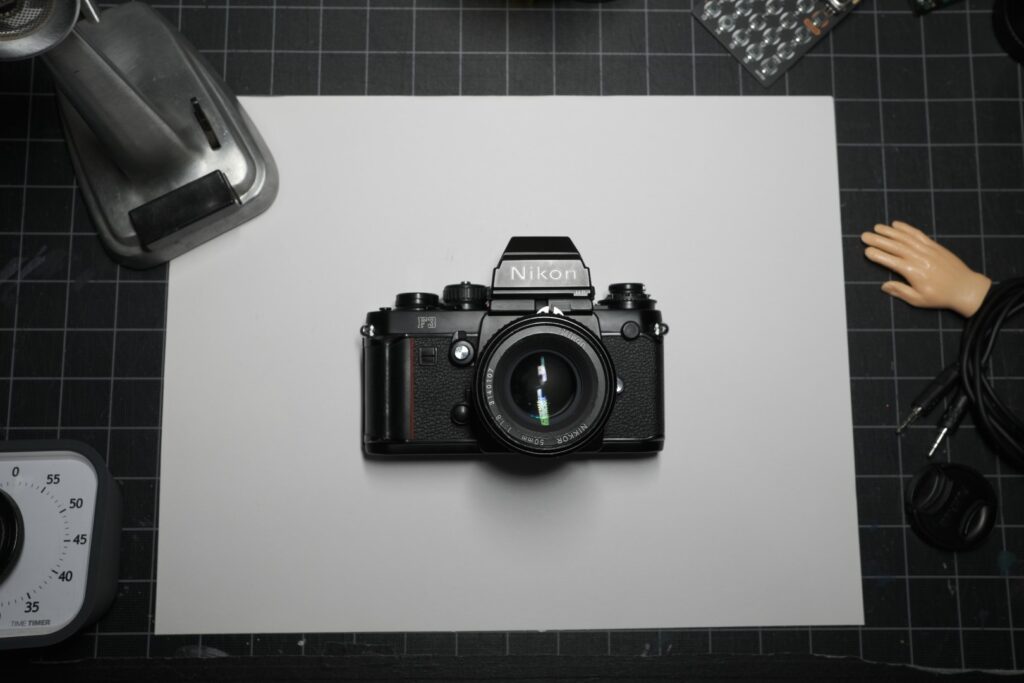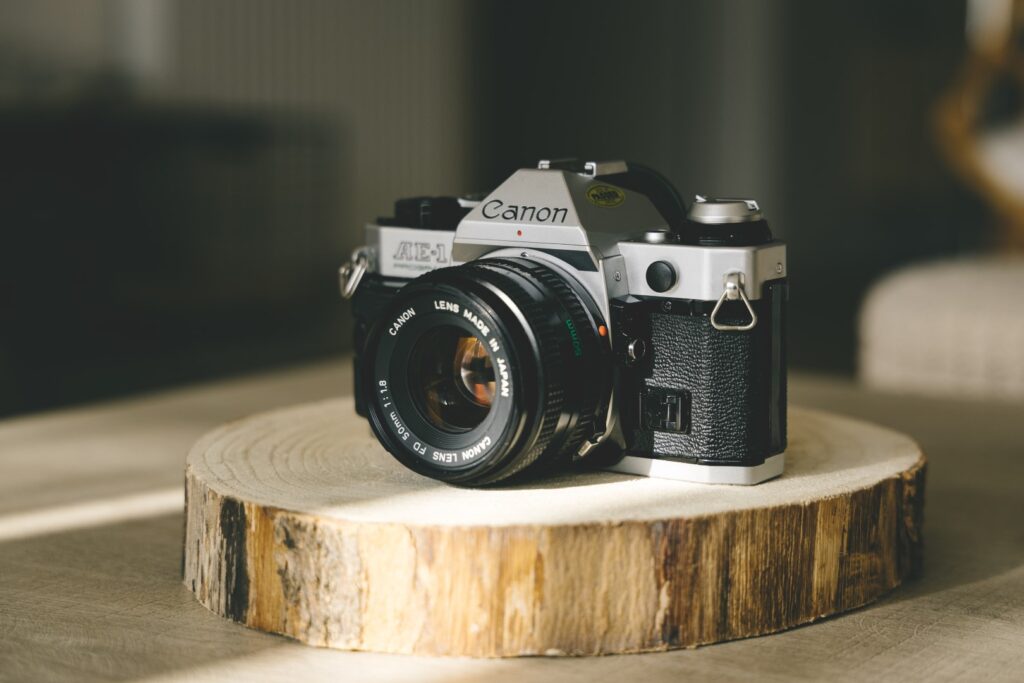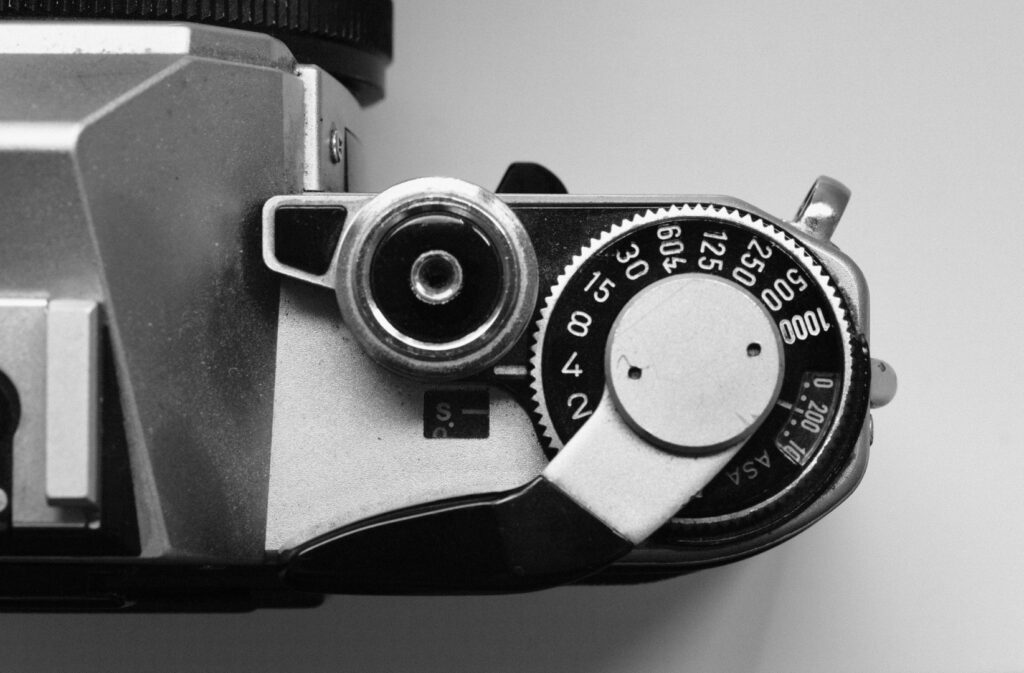As photographers, both amateur and professional, we all have our favorite gear—the cameras and lenses that have helped us capture some of our most memorable shots. Among the pantheon of esteemed photography equipment, two models stand out for their impact on the industry and their lasting appeal: the Canon AE-1 and the Canon AE-1 Program. Introduced in the late 20th century, these two cameras marked significant milestones in photographic technology, and their appeal hasn’t faded even as we embrace the digital age.
This blog aims to dive deep into these iconic models and evaluate their worth in 2024. We’ll explore their unique features, the factors that contribute to their value, and how they stack up in the current market. For a deeper dive into the features and performance of the camera, feel free to explore our comprehensive review.
The Canon AE-1 and AE-1 Program Camera Models and their Differences
In the world of vintage photography, few models have left as indelible a mark as the Canon AE-1 and its subsequent iteration, the Canon AE-1 Program. These two models share many similarities but also have key differences that set them apart.
Canon AE-1: An Overview

Launched in 1976, the Canon AE-1 was a groundbreaking SLR camera. It was the first camera to incorporate a microprocessor, which greatly simplified its operation and made it an instant hit among amateur photographers. The AE-1 boasted an electronically controlled, electromagnet horizontal cloth focal plane shutter with a speed range of 2 to 1/1000 second plus Bulb and flash X-sync of 1/60th second. Its quick-focus system and lightweight body—thanks to its robust polycarbonate construction—were further selling points.
But perhaps the most influential feature of the AE-1 was its user-friendly nature. It offered shutter-priority automatic exposure and full manual exposure, making it a versatile choice for both beginners and advanced photographers. It simplified the complexities of photography, making it more accessible to the masses, and played a significant role in popularizing the SLR format.
Canon AE-1 Program: An Overview
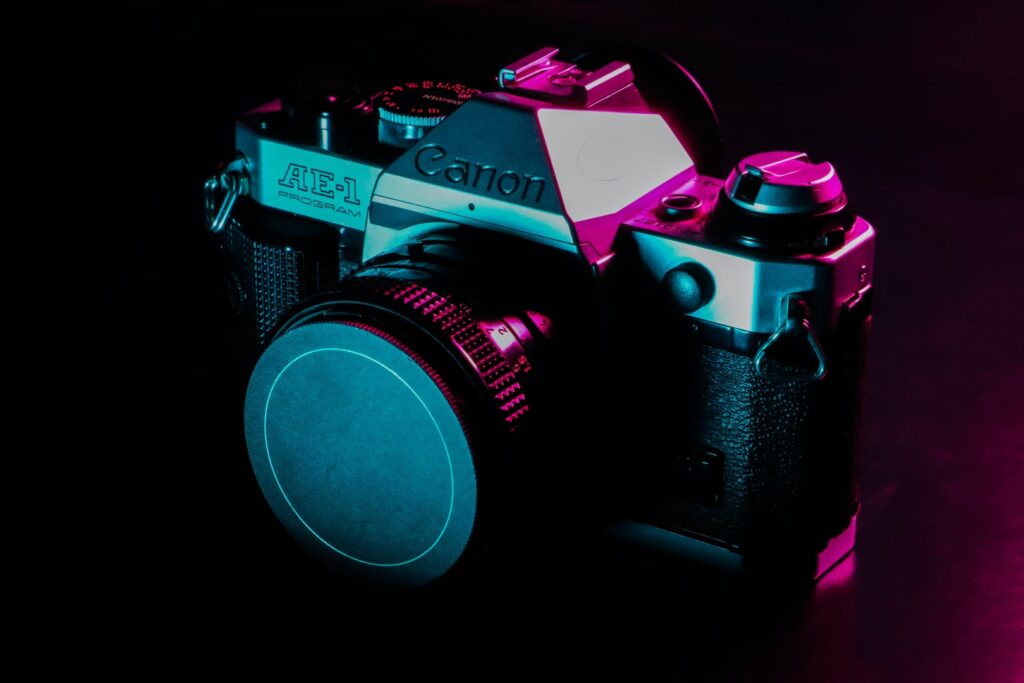
Building on the success of the AE-1, Canon introduced the AE-1 Program in 1981. This model retained the core features of the AE-1 but added several enhancements to make it even more user-friendly. The most notable new feature was the Program AE mode. With this mode, the camera could automatically select both the shutter speed and aperture for optimal exposure—a feature that was relatively advanced for its time.
Moreover, the AE-1 Program offered additional support for accessories and had a slightly improved viewfinder. The camera body was almost identical to the AE-1, maintaining the lightweight polycarbonate construction, but had some minor cosmetic changes, including a different grip pattern.
What Makes Canon AE-1 and AE-1 Program Cameras Valuable?
The value of the Canon AE-1 and AE-1 Program is a blend of their historical impact, craftsmanship, performance, and nostalgic appeal. Both models revolutionized SLR photography—AE-1 with its microprocessor, and AE-1 Program with its Program AE mode—making high-quality photography accessible to more people. Despite their age, well-maintained models still deliver impressive results today, owing to their robust polycarbonate construction and quality lenses. For collectors and photographers, these cameras offer a tangible connection to photographic history, contributing to their continued appeal and value.
What is the Canon AE-1 and AE-1 Program Worth in 2024?
The sustained appeal of the Canon AE-1 and AE-1 Program in the 2024 market is undeniably intriguing. Let’s delve into their worth, bearing in mind the current market data.
The Canon AE-1 in 2024
Over the recent months, the Canon AE-1 has changed hands for an average price of around $148 according to actual eBay sales data. However, the actual worth of individual AE-1 cameras can diverge from this average significantly, depending largely on the lens and condition.
The lens paired with the camera can greatly influence its market value. If the AE-1 is coupled with a desirable lens, such as the Canon 50mm f/1.8, the price can increase. This lens, renowned for its image quality and speed, is a popular choice among photographers, adding to the overall appeal of the package. On the other hand, if the camera comes with a non-Canon lens or a lens that isn’t particularly sought after, the selling price might decrease correspondingly. If you’re curious to explore more about lenses compatible with the AE-1, we recommend checking out our dedicated blog post on the subject.
The condition of the camera is equally crucial. A well-preserved AE-1, showing minimal signs of use, with a clean and fully functional mechanism, can command a higher price. Conversely, a camera with visible damage or functionality issues is likely to fetch a lower price.
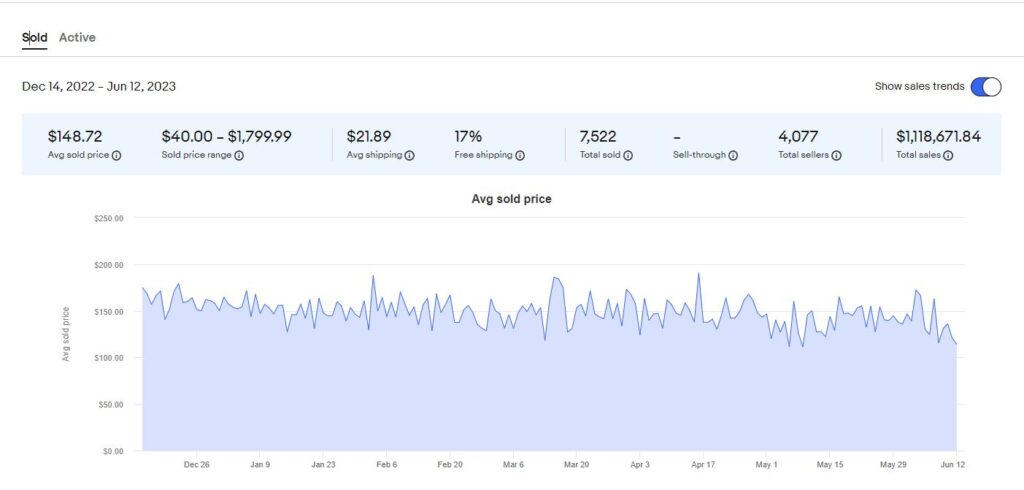
The Canon AE-1 Program
As for the Canon AE-1 Program, the average selling price has been slightly higher, around $157. However, the close similarity in names between the two models can sometimes blur the price tracking accuracy, suggesting that the gap might actually be more substantial. Again, the lens included with the camera and the camera’s condition are significant price influencers. An AE-1 Program with a sought-after, high-quality lens can fetch a higher price, while the price might drop for a camera paired with a less desirable or non-Canon lens.
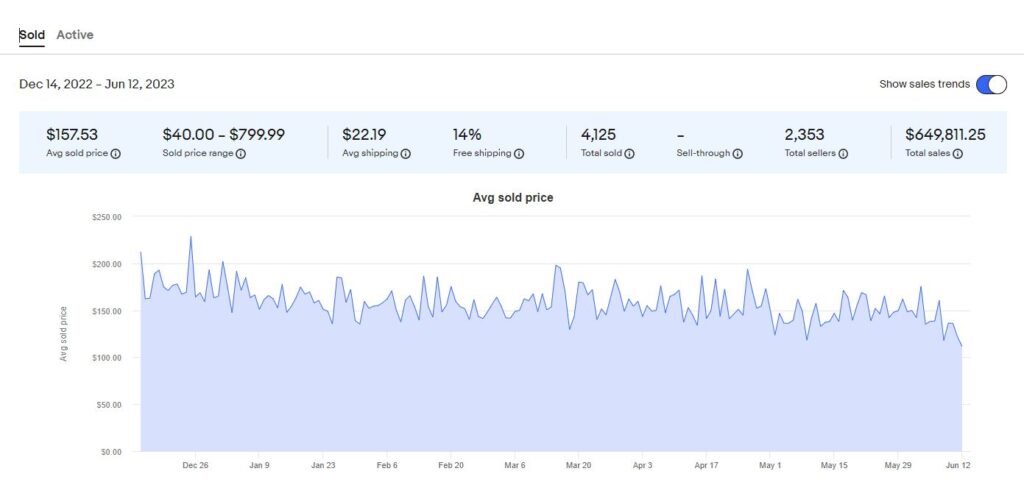
The camera’s condition plays a major role here too. An AE-1 Program in excellent condition, free from damage and with fully functional mechanisms, can reach a premium price. Cameras with noticeable wear and tear or mechanical issues will likely sell for less. Some aspects, such as deteriorated light seals, might not be immediately noticeable, yet they can significantly affect the camera’s functionality. Fortunately, with a bit of learning, it’s quite straightforward to replace these on your own.
It’s interesting to note that both models are often listed at prices significantly higher than their final selling prices. This trend suggests that the expected selling price by some sellers may not always align with the market’s readiness to pay, underscoring the importance of having a realistic understanding of these cameras’ value.

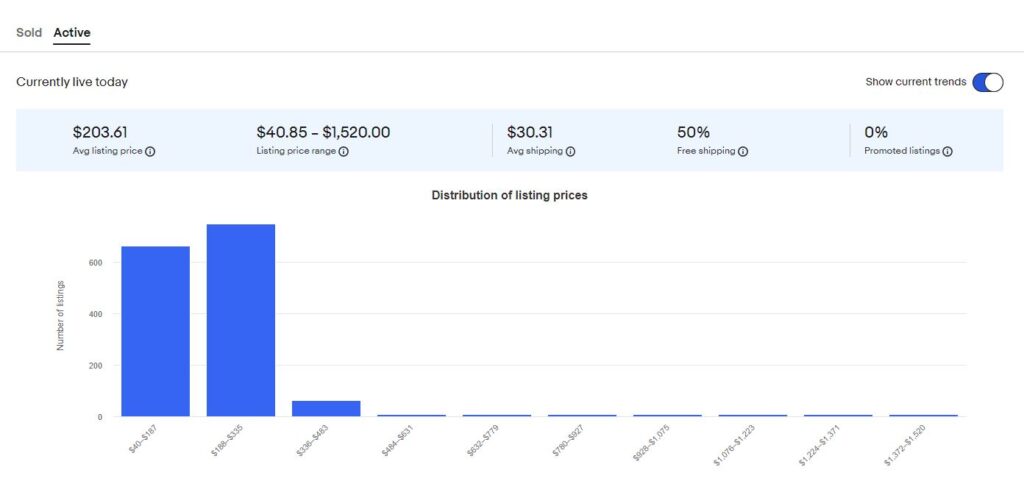
Where Can You Check the Selling Prices?
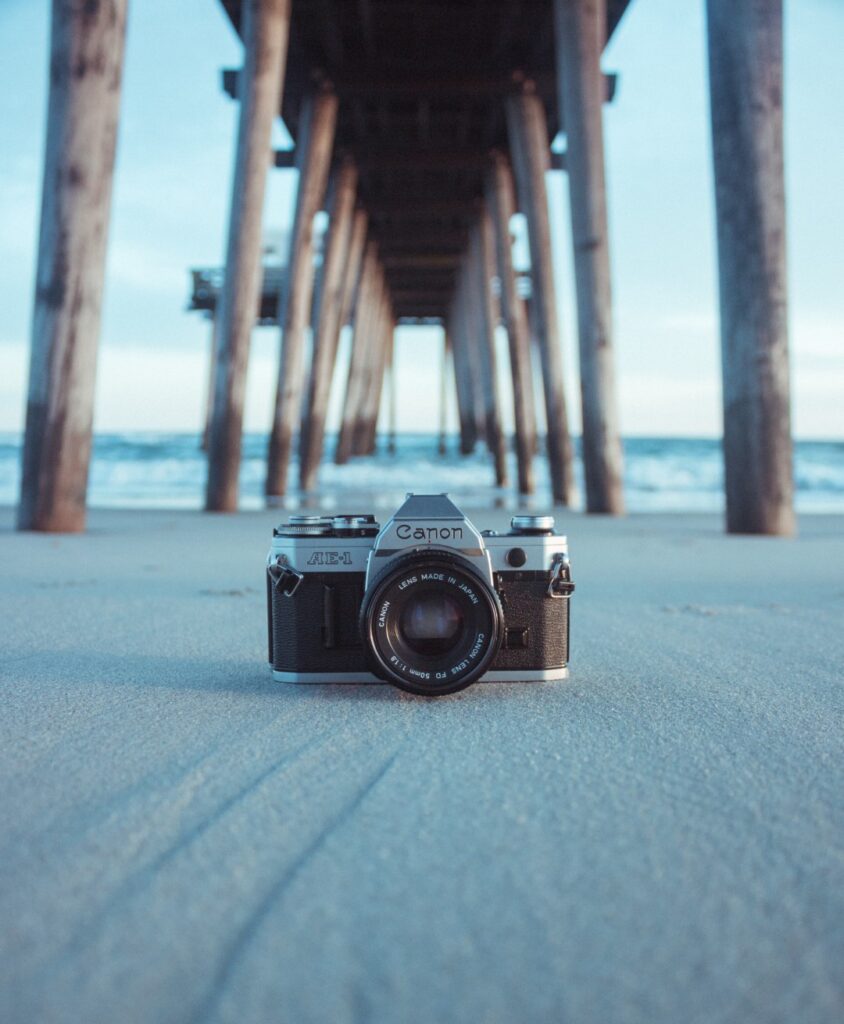
In the digital age, there are several reliable platforms where you can check the current selling prices for vintage cameras like the Canon AE-1 and AE-1 Program. These platforms not only serve as marketplaces but also provide valuable data on how much buyers are willing to pay for these models.
eBay: A go-to platform for many, eBay provides a wealth of data on sold listings, which is crucial for understanding the actual market value of these cameras. To check, simply search for the camera model, then filter the results by ‘Sold Items.’ This will give you a list of recent sales, including the final selling price.
Online Vintage Camera Shops: Stores such as KEH, B&H, Adorama, and others often have listings for vintage cameras, including the Canon AE-1 and AE-1 Program. While prices may vary from those found on eBay, these platforms can give a general idea of the retail value of these cameras. It might be even worth checking Amazon, they also sometimes have great deals.
Photography Forums and Social Media Groups: Platforms like Reddit, photography forums, and Facebook groups can be helpful to see how much people are buying and selling these cameras for in a more casual setting. Users often share their buying and selling experiences, which can provide valuable insights.
Remember, when checking prices, it’s important to take note of the condition of the camera and the included lens or accessories, as these factors can significantly impact the final selling price.
How to Determine the Value of you Canon AE-1 or AE-1 Program
When it comes to valuing vintage cameras like the Canon AE-1 or AE-1 Program, a combination of physical assessment and market research is needed. Here are some steps to guide you in determining the worth of your camera.
1. Assess the Condition:
Start by inspecting the physical state of your camera. Check for signs of wear and tear on the body, ensure all mechanical functions (such as shutter, aperture, focus) are operating smoothly, and evaluate the condition of the included lens and accessories.
2. Check the Lens:
The lens can play a significant role in the overall value of your camera. A sought-after lens like the Canon 50mm f/1.4, for example, can increase the total worth. In contrast, a less popular or non-Canon lens might diminish the value.
3. Consider the Extras:
Having the original packaging, manuals, and extra accessories (such as additional lenses, a flash, or a camera bag) can enhance your camera’s appeal. Collectors often favor a complete set, which can add value to your camera. It’s worth considering each of these items separately when determining the overall value of your package. You may not find the exact bundle as yours sold online, so look for similar sold packages and adjust your price accordingly. In some cases, selling the lens and camera separately could even yield a better return. Use the filter “Sold-Items” on eBay to get a better understanding or keep an eye on the market for a bit.
4. Look at Market Prices:
Once you’ve thoroughly assessed your camera’s physical and operational condition, delve into market prices. Websites like eBay, KEH, B&H, and various photography forums can provide a ballpark figure of what similar models in comparable conditions are selling for.
5. Take Note of Variations:
Prices can fluctuate considerably based on a variety of factors. Even two identical models might have different selling prices depending on the time and place they were sold. Checking multiple sales can help provide a more accurate price range.
Determining the value of your Canon AE-1 or AE-1 Program is not an exact science but a process that combines careful examination and market research. While it might require some patience, this process can give you a fairly accurate estimate of your camera’s value. Always bear in mind that a camera’s worth is ultimately determined by what someone is willing to pay for it, which can vary depending on the buyer’s preferences and current market trends.
Final Thoughts
In wrapping up our discussion on the value of the Canon AE-1 and AE-1 Program in 2024, it’s clear that these iconic cameras have maintained their worth both monetarily and in the realm of photography history. While we’ve delved into the factors that influence their selling price, it’s important to acknowledge that the Canon AE-1 and AE-1 Program’s true value extends beyond dollars and cents. These cameras, both a testament to Canon’s innovative spirit and a nod to the evolution of photography, represent a significant period in photographic history.
The process of evaluating their market value reveals the complex interplay of condition, lens type, and accessories. But, it’s the broader context – their role in advancing photography – that underscores their lasting appeal.
If you’re left with more questions about these timeless cameras or are keen to learn more about their quirks and features, we encourage you to explore our blog post addressing common questions about the AE-1 series.
Furthermore, for those looking to pair their AE-1 with the perfect film to truly harness its potential, our dedicated post about the best film ideas for the Canon AE-1 is a must-read.
Whether you’re buying, selling, or using these cameras, remember, you’re not just dealing with a piece of technology; you’re interacting with a piece of photography’s rich history. That, in itself, adds a unique dimension to their worth.


